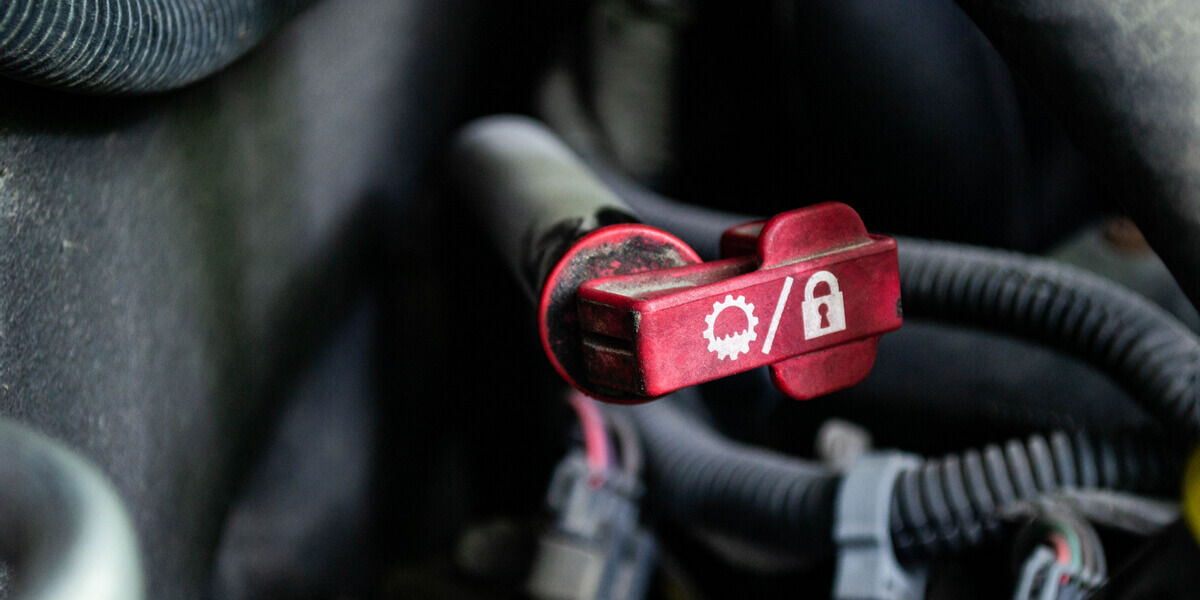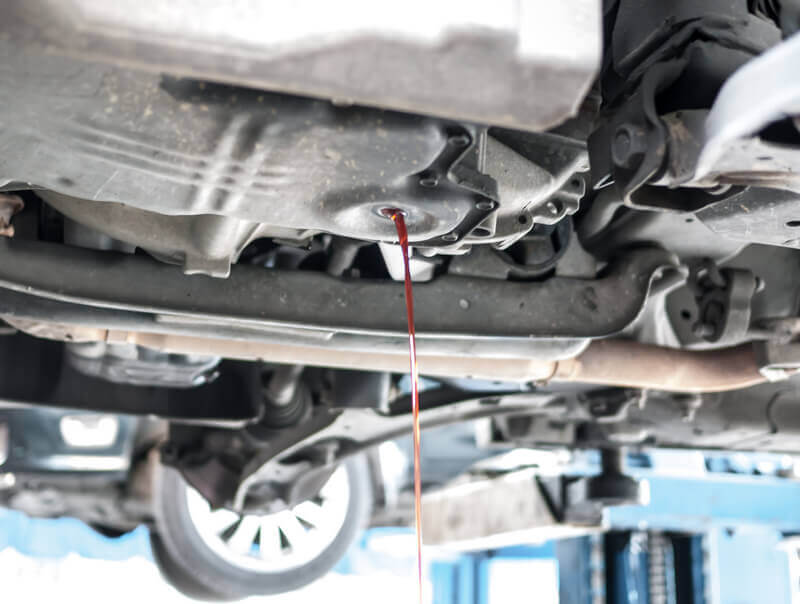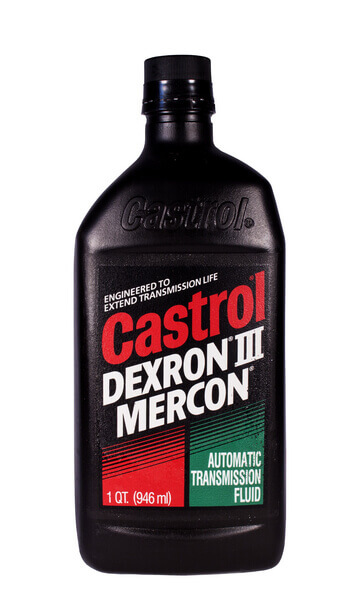
Whether your vehicle is automatic or manual, the transmission unit that sends the power to the wheels needs oil to ensure it's working properly. Just like any other part of the car that creates friction, the transmission also needs lubrication to keep it from overheating and eventually breaking. That's taken care of by the transmission fluid.
Transmission fluid is a specialized fluid optimized for lubricating the transmission system, especially the gears grinding together when the car drives. The oil also serves as a coolant of grinding gears and a hydraulic fluid that helps gear switching.
As you may know, a transmission unit consists of various sized gears which are coupled together via a clutch mechanism. When your car is in neutral or in between gears, these gears rotate freely. When your car is in a certain gear, the gears start to rotate together.
To keep the gears grinding smoothly, your car’s transmission unit needs fresh specialized oil. Luckily, transmission fluid doesn’t need to be changed as often as motor oil, but regular transmission maintenance is essential to keep your car running well.
In this article, we will see why transmission fluid change is important for your car, when to change the transmission fluid, how often should transmission fluid changes occur and finally, what’s the cost of transmission fluid replacement.
Why you should change transmission fluid?
As well as engine oil, transmission fluid has a limited lifespan and it inevitably deteriorates as time and miles pass. Old transmission fluid loses its cooling and lubricating abilities. Once deteriorated, transmission fluid isn’t as efficient as it should which can cause expensive transmission breakdowns.
To sum it up, the answer to why you should change your transmission fluid is because it prolongs the lifespan of your transmission and keeps your car as fuel-efficient as possible.

How often should you change transmission fluid?
The good part about transmission fluid is that it doesn’t need to be changed nearly as often as engine oil.
The normal replacement interval of transmission fluid is 100,000 miles for most automatic transmissions, while some transmission manufacturers claim even 150,000 miles is enough. It really depends on the type of transmission fluid as well as the weather condition in which the car is driven. When in doubt, check into your car's owner manual or repair manual and look for the manufacturer's recommended interval.
Nonetheless, changing your transmission fluid more often only benefits your car, so we’d recommend you changing transmission fluid at every 50,000 covered miles or as soon as it turns darker.
Driving habits also have a big impact on the recommended replacement interval. If you drive your car in city traffic, constant gear changes due to stop and go situations cause transmission fluid to deteriorate faster as opposed to driving your car mostly on open roads. The same rule applies to car owners living in a cold climate. Cold weather will cause the fluid to degrade faster and while require shorter intervals.
When it comes to manual transmissions, these units require different transmission fluid and their maintenance intervals are significantly shorter. Most stick shift transmissions don't have a dipstick which makes it harder to inspect the fluid level and color. In this particular case and especially if you don't have access to a car hoist, it’s best to get some help from a trustworthy mechanic.

When you should change the transmission fluid in your car?
As transmission fluid deteriorates, it loses some of its specific features and the easiest one to spot is its color. Fresh automatic transmission fluid is most commonly red, but could also be pink or clear. The first sign of deteriorating transmission fluid is it turning darker.
Another clear indication that transmission fluid needs to be changed is a burned smell. Furthermore, a burned smell may also indicate that the transmission is having mechanical problems, especially if it comes back soon after it has been replaced. It's not uncommon that a burned smell may also be followed by particles and debris in the fluid and that’s a clear sign that your transmission unit needs more than just a fluid change.
Recent vehicles
Unfortunately, most newer cars don’t have a transmission fluid dipstick anymore. Recent cars require a professional OBD2 scan tool and special equipment to inspect and replace the transmission fluid. In that case, going to a service center or seeking help from a trusted mechanic is your only option.
If your car has a transmission fluid dipstick, you can use it to check the level and the condition of the transmission fluid yourself. If you're not sure how to do that, make sure to look for the recommended procedure in your car's repair manual beforehand.
On the other hand, most stick shift cars need to be raised on a hoist to check the transmission fluid level. To inspect it, remove the upper drain plug and make sure the fluid reaches the bottom of the holes. To help you check the consistency and color of the fluid, use an oil syringe to suck out a little bit and pour it into a clear cup. Manual transmission fluid can be pretty much any color but it should at least be clear and exempt from metal flakes.
To check the transmission fluid level and color, follow these steps:
- First, consult your car's repair manual and find the recommended procedure for checking your transmission fluid.
- Park your car on a level surface. This will give you the most accurate transmission fluid reading.
- Make sure that the engine and transmission are at a working temperature when checking the transmission fluid. Because of that, you should be cautious about running cooling fans and hot engine components. We’d recommend using protective gloves to minimize the risks of injury.
- When checking automatic transmission fluid, the engine might or might not be running on neutral or park. On a manual transmission, the engine should be OFF. Check that you get the right procedure for your car or the level reading will be incorrect.
- Identify the transmission fluid dipstick handle. It will most probably be brightly colored and or have some kind of gear logo on it.
- Remove the dipstick and wipe it off the using a clean rag. Watch not to spill the fluid from the dipstick onto the hot engine components since it will smell weird every time you get it running.
- Reinsert the clean dipstick and remove the dipstick again to check the fluid level. It should be between the low and full marks. Use a clean rug again to check for the color and the smell of the fluid.
- If your transmission fluid is below or close to the low mark, you might have a transmission leak. If you’re refilling the automatic transmission yourself, make sure you use the recommended transmission fluid and to fill it to the appropriate level. That’s just a temporary solution and you should get the leak fixed as soon as possible.
- Reinstall the dipstick.
What’s the cost of a transmission fluid change?

The price of a transmission fluid replacement will depend on a multitude of factors. Generally speaking, bigger and beefier transmission units require more transmission fluid, whereas specialized transmissions on performance cars also require higher quality fluid.
Cost of the fluid
The cheapest option, of course, is to do it yourself. Provided that you have the knowledge and the resources, you’ll save on the cost of labor and you’ll only pay for fixed expenses which are transmission fluid, a filter, and a gasket.
Most modern cars utilize ATF+4 or SP4 fluids. Their price ranges from $8 to $20 per quart.
Quantity
Depending on how big is your transmission, fluid change requires 5 to 15 quarts of fluid.
Replacing the transmission fluid filter and cleaning the pan is also recommended during this procedure. Some transmissions will require a new pan gasket too.
A new filter will cost you between $15 and $30. If your car requires a pan gasket, it will probably come in the kit. All in all, expect a total of $150 provided that you drive an average modern car.
Labor
The next option is a mechanic. The cost will depend on how much they charge per hour but expect to pay around $100 and upwards.
Finally, there’s the most expensive option: the dealership. Knowing that dealers charge more per hour, and more for OEM transmission fluid, the same procedure is going to cost you at least double what you’d pay at an independent repair shop. Expect to pay somewhere between $200 and $300.
These prices are just rough estimates of transmission fluid change costs. The expenses may vary from car to car, and high-end brands, as well as luxury and performance cars, tend to cost more due to the nature of their transmission units. Different types of transmissions like CVT and limited-slip models will also require specialized and more expensive fluid.
Last words
Keeping the transmission fluid in your car in good condition is your best bet to prevent costly drivetrain repairs. Inspect it regularly and change it when needed. Always make sure to use the right type of fluid and keep in mind that more expensive fluid doesn't always mean better. However, in some cases, it does. Synthetic transmission fluid or fluid with specific additives often cost more than regular fluid but will also deliver greater performance and allow for a longer replacement interval. In all cases, remember to use the right type of fluid for your car and to follow the manufacturer's recommended procedure. Doing so will ensure that you correctly replace the transmission fluid in your car while also saving some of your hard-earned money.
